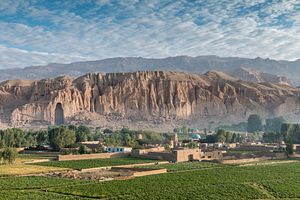Central Asia has no shortage of critical, politically fraught, logistically challenging, and financially important energy projects. There’s the Turkmenistan-Afghanistan-Pakistan India gas pipeline (TAPI) and the Central Asia South Asia Electricity Transmission and Trade Project (CASA-1000), both of which have been discussed in depth here at Crossroads Asia and feature in an excellent recent podcast from RFE/RL. But there’s another project in the work that’s run into trouble.
A change in the route for the Turkmenistan-Uzbekistan-Tajikistan-Afghanistan-Pakistan (TUTAP) electricity project has sparked protests in central Afghanistan which moved to Kabul on Monday.
Khaama Press reported Friday that thousands had gathered in Bamyan to protest the decision to route the project through Salang, rather than Bamyan. The project–financed by the Asian Development Bank under a less acronym-friendly title–seeks to boost Afghan access to electricity. A major feature of the project is linking together the ten separate grids that currently provide electricity in Afghanistan.
In a November 2015 energy sector assessment, the ADB writes that “Afghanistan needs a unified national electricity grid.” The document further comments that “different parts of Afghanistan’s networks are supplied as passive islands by power fed from Iran, Tajikistan, Turkmenistan, and Uzbekistan.” The problem is that “because of asynchronous grid operations in these countries, the current network configuration is highly inflexible.” In order to connect power from one network to a neighboring one–allowing flexibility in supply and more efficient load dispatch–converter systems need to be installed. These “back-to-back” converter systems are part of the TUTAP project, as are energy transmission stations to link the grids together.
Earlier this year, Second Vice President Mohammad Sarwar Danish spoke out against routing the TUTAP projects through Salang rather than Bamyan. He pointed to a 2013 assessment prepared by Fichtner, a German engineering consultancy, for the ADB that recommended Bamyan for the project’s second line crossing the Hindu Kush–a 500 kV transmission line. “The Bamyan route will avoid the narrow space and difficulties along the Salang Pass, will allow connecting further generation by coal fired power plants along the route and will secure power supply of Kabul and south Afghanistan by using a separate route.”
It’s not clear precisely when the decision was made to switch from Bamyan to Salang. Khaama suggests it was made in a recent cabinet meeting, though Danish’s January comments indicate that the Salang route had been chosen previously. In addition, Khaama cites an unnamed source as saying that an additional transmission line–220 kV–is planned for Bamyan.
Nonetheless, the issue has dovetailed with wider tensions in Afghanistan and within the government. Mohammad Mohaqiq, CEO Abdullah Abdullah’s deputy, said the government rejecting public demands to use the Bamyan route “is a clear discrimination and bullying against the people of central provinces.”
Da Afghanistan Breshna Sherkat (DABS), as TOLOnews reports, blames the previous government for the confusion about routes. DABS says it inherited the decision to go through Salang, meanwhile former Second Vice President Karim Khalili rejected the charge. The 2013 assessment considers the constraints of the Salang route but nonetheless refers to the Bamyan route as an “alternative”–this seems to indicate that while the assessment recommended the Bamyan route, the plans were in place for Salang.
The benefits of the Salang route are financial, but the costs seem to be political. Protests occurred Monday in Kabul over the issue, Mohaqiq said. “The people will not accept the recent decision made by the cabinet. They [people] will not remain silent until their demands are met.” President Ashraf Ghani has promised a review of the project plans, a guarantee of further stalemate.
One additional detail from the ADB energy sector assessment underscores why TUTAP is important. The project is fundamental to seeing the promise of CASA-1000 fulfilled. According to the assessment, “bulk export of energy is not possible and [Afghanistan] cannot serve as a transit system for transmitting electricity from Central Asian countries to South Asia.”
































